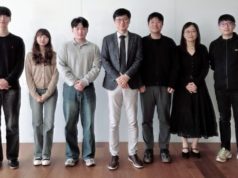Today on In Case You Missed It: Researchers at the University of Wisconsin-Madison are leveraging 20,000-core supercomputers to model the inner workings of supercells in hopes of finding out why some storms unleash tornadoes while others do not. In all, the simulation relied on nearly two billion individual data points.
We also take a look at a sure-handed robotic surgeon developed at the University of Bern in Switzerland that’s designed to drill tiny holes in your skull. See, in order to install a cochlear implant, doctors need to cut a small hole in your skull but the location is packed with facial and taste nerves. One wrong move and the operation can do more harm than good. But with this robo-surgeon on call, doctors can drill more deftly.
As always, please share any interesting tech or science videos you find by using the #ICYMI hashtag on Twitter for @mskerryd.






